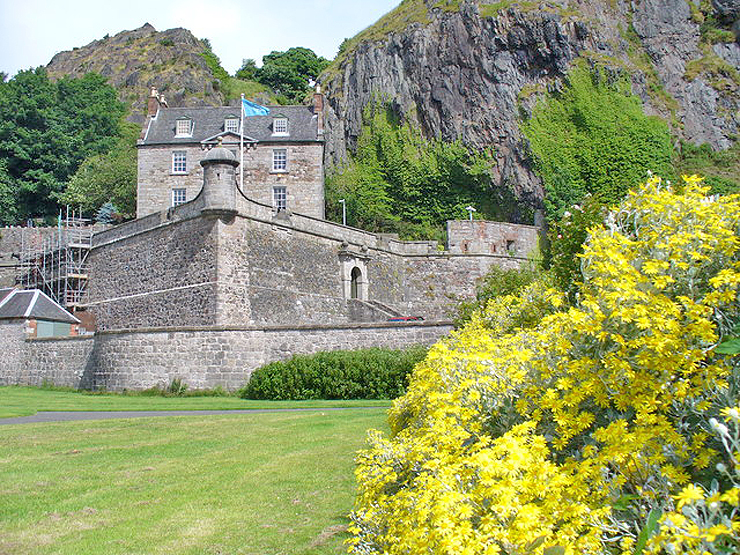Dumbarton Castle is a medieval Scottish castle located in the city of Dumbarton, in the West Dunbartonshire region of Scotland,United Kingdom.
Dumbarton Castle is a castle situated on the Firth of Clyde at Dumbarton in the West Dunbartonshire region of Scotland. From the fifth century to 1018, Dumbarton Rock was the center of power of the Britons of the kingdom of Strathclyde. With the exception of two medieval buildings, all remaining fortifications and buildings date from the eighteenth century. Dumbarton is a corruption of the Scottish Gaelic Dun Breatann, fort of the Britons.
Alexander II of Scotland built the castle around 1220 as a defense against a threat from Norway, whose rulers ruled over the Hebrides and the islands in the Clyde.
In 1305 Sir John Menteith, guardian of Dumbarton Castle, captured Sir William Wallace and turned him over to England for trial and execution.
Changes were made in the 18th and 19th centuries. The last military act took place during World War II. Dumbarton Castle has twice been chosen as the location for feature films. Parts of Gregory’s Two Girls were filmed there while the fortress was used as a hiding place for German spies in the BBC production The 39 Steps.
The complex occupies a striking basalt rock of volcanic origin on the banks of the Clyde at the mouth of the Leven. In 1971 the building was included in the Scottish monument lists in the highest category A.
Access : Coordinates: 55.936, -4.5628 / Dumbarton is a town in Clydeside in the Central Belt of Scotland.
Highlights :
- The history of fortifications on Dumbarton Rock can be traced back over 1500 years. At that time the kingdom of Alt Clut was ruled from this hill. The earliest known of these rulers was Ceretic Guletic in the fifth century. Legend has it that the mythical wizard Merlin stayed there in the 6th century at King Rhydderch Hael’s court. At the time of the Viking attacks on Britain, the hill was besieged several times.
- The splendid views from the two peaks of ‘White Tower Crag’ and ‘The Beak’ are a reminder of why this rocky outcrop had been chosen as the ‘Fortress of the Bretons’ for many centuries.
- Dumbarton Castle was built on Dumbarton Rock, a volcanic rock with two peaks, White Tower Crag (74 meters) and the Beak. The two peaks are more or less east-west. On the south side, between the two hills, is the Governor’s House, which served as the residence for the administrator of the castle.
The north side was protected by the Duke of York’s Battery, which was built around 1795. The One-Gun Battery had already been established here around 1550 to protect the northern main entrance.
The western hill has the highest peak, called White Tower Crag, at 74 meters high. In the Middle Ages the White Tower (White Tower) stood here. The Spanish and Bower Batteries were established on the western flank of this hill around 1735 around 1790 these were reconstructed to carry heavier artillery.
The top of the eastern hill is called the Beak. On the north side of this hill is the Duke of Argyll’s Battery , this battery replaced a lighter battery called Belhouse Battery around 1790. To the east is the Prince of Wales’ Battery, which was built around 1795 to replace the Round Battery. On the south side is the Crane Bastion, built to lift supplies up from the ground, 61 meters below. At the top of the hill is the powder magazine, which was built in 1748 to store 150 barrels of powder. The warehouse was designed by engineer William Skinner, who also designed Fort George.
Go next : Denny Ship Model Experiment Tank, / Loch Lomond stretches north of Balloch. / Balmaha is a village in the county of Stirlingshire and Clackmannanshire in central Scotland.

